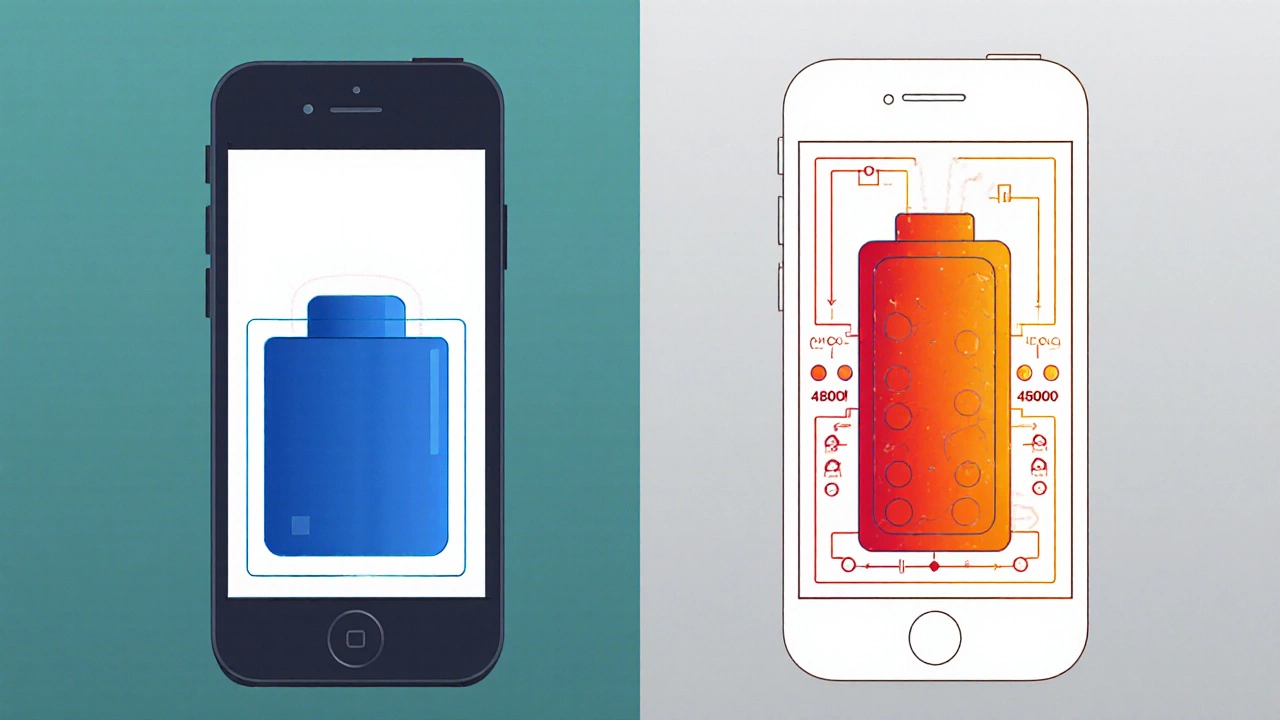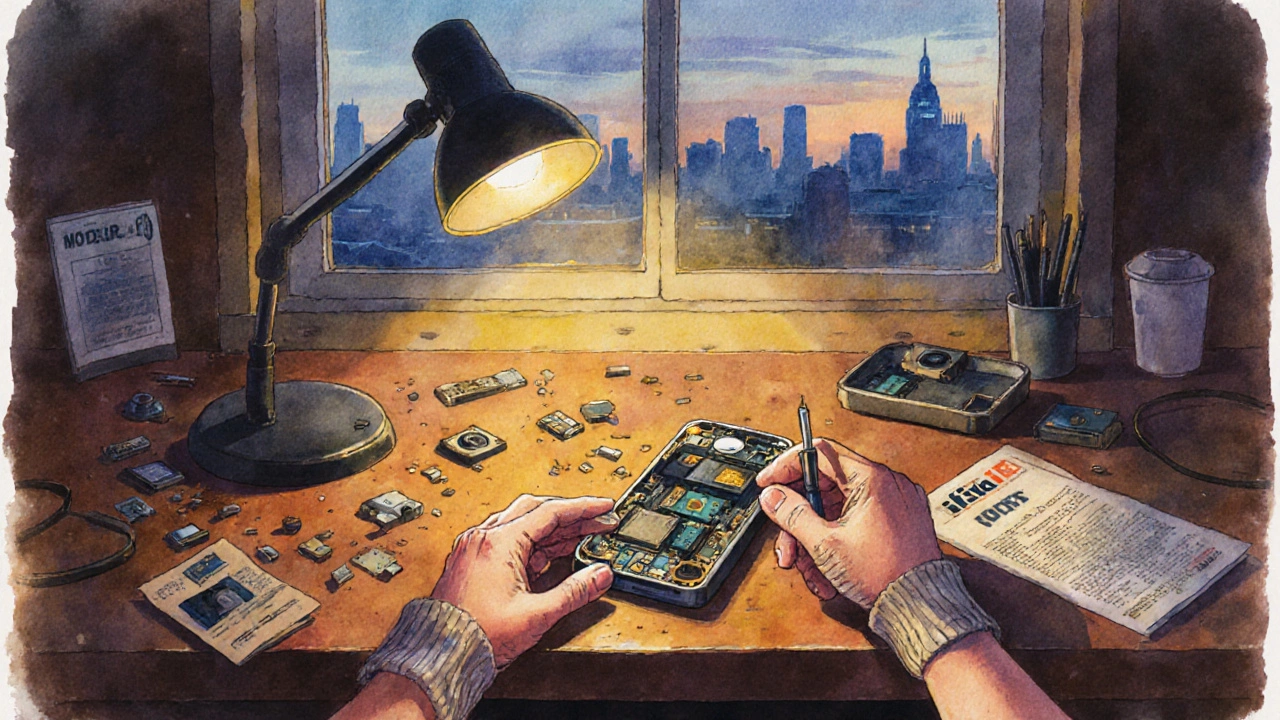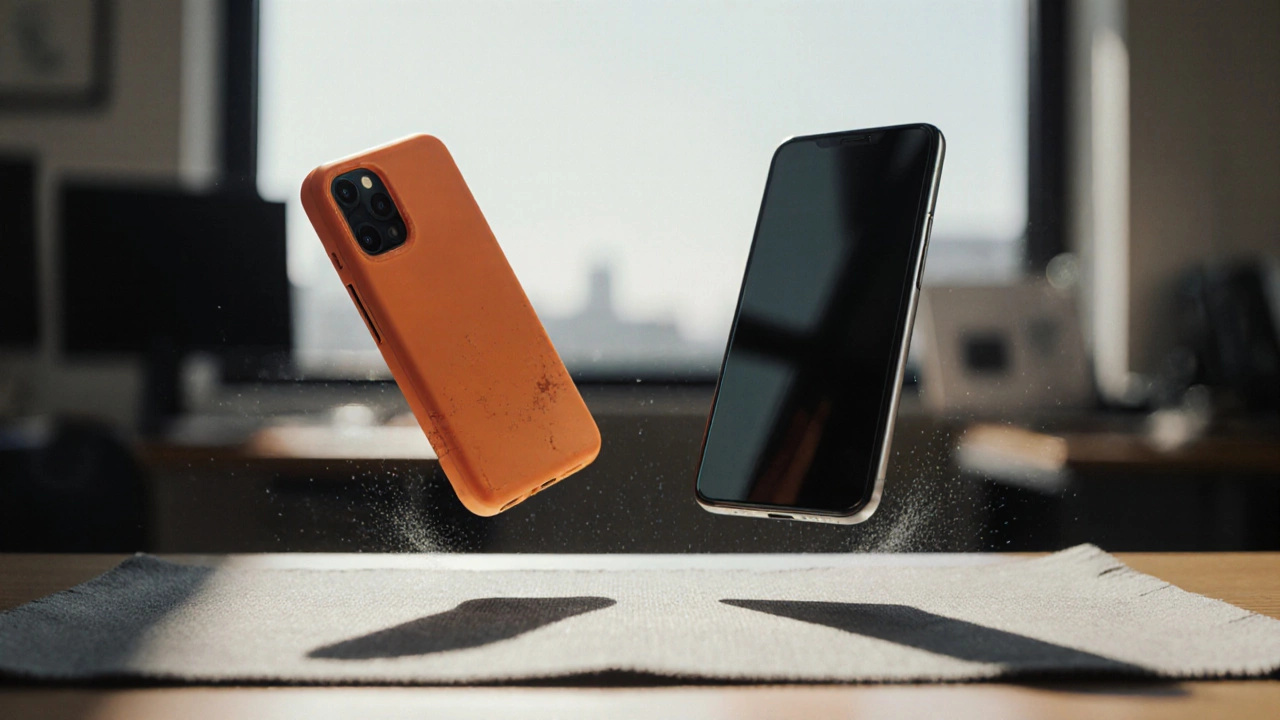Phone Longevity Estimator
Estimate Your Phone's Lifespan
Based on battery capacity and repairability score
Estimated Lifespan
Based on your inputs
Key Factors Explained
Higher battery capacity actually reduces lifespan due to faster chemical wear from charging cycles. A repairability score of 7+ allows easy part replacement, extending usable life significantly.
When you compare a 2008 flip phone to a 2024 flagship, you’ll notice the older device often outlives its newer counterpart. This isn’t magic; it’s a mix of design choices, material limits, and how manufacturers treat software. Below we unpack the real reasons behind the surprising stamina of old phones, and what it means for your next purchase.
What We Mean by “Old Phones”
Feature Phone is a mobile device with basic calling, texting, and limited data functions, typically built before 2015. They often feature small LCD screens, plastic casings, and removable batteries. In contrast, today’s Smartphone refers to a fully internet‑connected device with high‑resolution displays, multi‑core processors, and integrated batteries. Understanding the structural differences helps explain why the first group tends to stick around longer.
Physical Build Quality
Old phones usually sport a Plastic Chassis that is sturdy, flexible, and capable of absorbing drops without cracking. Modern smartphones push glass and metal for a premium feel, but those materials are more fragile under impact. The flexibility of plastic means fewer broken frames, extending the device’s usable life.
Manufacturing processes also matter. Back in the early 2000s, many factories followed stricter quality‑control standards because the market demanded durability for business users. That focus on Manufacturing Quality ensured tight tolerances, uniform component placement, and robust internal connections. Newer mass‑production lines aim for speed and cost‑efficiency, sometimes sacrificing those tolerances.
Battery Technology and Longevity
The heart of any mobile device is its battery. Old phones typically used Lithium‑ion Battery with lower capacity (800‑1500mAh) and simpler charging circuits. Because the power draw was modest-no 4K video or AI processing-the battery cycles more slowly, stretching its lifespan.
Modern smartphones pack 4000‑5000mAh cells and support fast‑charging, wireless charging, and power‑intensive features. Those higher charge‑rates accelerate chemical wear, reducing the number of effective cycles. A study from a European university in 2023 showed that a typical 2024 flagship drops to 80% capacity after about 500 full cycles, whereas a 2010 feature phone often exceeds 1000 cycles before noticeable loss.

Software Bloat vs. Simplicity
Old phones run lightweight operating systems-often a proprietary UI with a few built‑in apps. This simplicity translates to lower CPU usage, less heat, and significantly reduced wear on internal components. The term Software Bloat describes unnecessary code and background processes that consume resources is virtually nonexistent on a 2008 model.
Modern smartphones receive frequent Operating System Updates large software packages that add features, security patches, and UI changes. While updates improve security, they also introduce larger codebases that can strain older hardware, leading to slower performance and earlier hardware failures.
Repairability and Parts Availability
When a component fails, older devices often allow Repairability the ability to easily replace parts like batteries, screens, or keypads. Removable batteries are a classic example-swap out a dead cell and the phone is as good as new.
Newer smartphones are sealed, using adhesive and proprietary screws. While this improves water resistance, it makes DIY repairs harder and more expensive. If you can’t find a replacement part, you’re more likely to discard the device rather than fix it.
Comparative Longevity Snapshot
| Device Type | Typical Battery Capacity (mAh) | Average Years of Use | Repairability Score* (1‑10) |
|---|---|---|---|
| Feature Phone (2000‑2010) | 800‑1,200 | 5‑7 | 8 |
| Early Smartphone (2010‑2014) | 1,500‑2,200 | 3‑5 | 6 |
| Modern Flagship (2020‑2024) | 4,000‑5,000 | 2‑3 | 4 |
*Repairability Score is based on ease of part replacement, availability of spare parts, and required tooling.

Common Myths About Durability
- Myth: Newer phones are built tougher because of tougher glass. Fact: GorillaGlass offers scratch resistance but shatters more readily than a plastic front on a feature phone.
- Myth: Software updates always improve device life. Fact: While security patches are essential, they can also demand more RAM and CPU power, accelerating hardware fatigue.
- Myth: Higher battery capacity means longer life. Fact: Fast charging and larger batteries run hotter, which chemically ages the cells faster.
What This Means for Your Next Phone Purchase
If you value a phone that sticks around for years, look beyond the glossy specs. Consider these practical tips:
- Choose a model with a removable battery or at least a reputable third‑party battery replacement ecosystem.
- Check the Repairability Score on sites like iFixit. A score of 7 or higher usually indicates easy part swaps.
- Prefer devices with a Plastic Chassis or aluminum frame over full glass back.
- Avoid phones that promise every new feature every year. A slightly older flagship often offers most of what you need with better longevity.
- Plan for software support. Some manufacturers commit to 5‑year Android updates, which helps keep the device functional without demanding newer hardware.
Future Trends: Will Phones Get More Durable Again?
There’s a growing “right‑to‑repair” movement pushing manufacturers to design more serviceable devices. Companies like Fairphone are already releasing modular smartphones with upgradable batteries and cameras. If regulations force longer software‑support windows, we might see a shift back toward the durability of the early 2000s, but blended with modern performance.
Frequently Asked Questions
Why do feature phones have longer battery life than modern smartphones?
Feature phones use smaller, lower‑capacity Lithium‑ion Battery cells and run lightweight operating systems that consume far less power. The combination of modest hardware demand and slower charging cycles reduces chemical wear, letting the battery retain capacity for many more charge/discharge cycles.
Can I extend the lifespan of my modern smartphone?
Yes. Use a protective case, avoid extreme temperatures, enable battery‑saving modes, limit fast‑charge usage, and replace the battery when its capacity falls below 80%. Also, uninstall unnecessary apps that run background processes, reducing Software Bloat and heat generation.
Is a plastic chassis better than glass for durability?
Plastic absorbs shocks better and is less likely to crack when dropped, making it more durable in everyday accidents. However, it can scratch more easily and may feel less premium. Glass offers a smoother surface and scratch resistance but can shatter on impact.
How does the right‑to‑repair movement affect phone longevity?
If manufacturers are required to provide spare parts, repair manuals, and modular designs, consumers can replace broken components themselves. This reduces electronic waste and often extends a device’s functional life by several years.
Do software updates shorten a phone’s lifespan?
Updates improve security and add features but can also increase resource demands. On older hardware, this may lead to slower performance and higher thermal stress, indirectly accelerating wear. Choosing devices with longer update support windows helps balance security and longevity.

